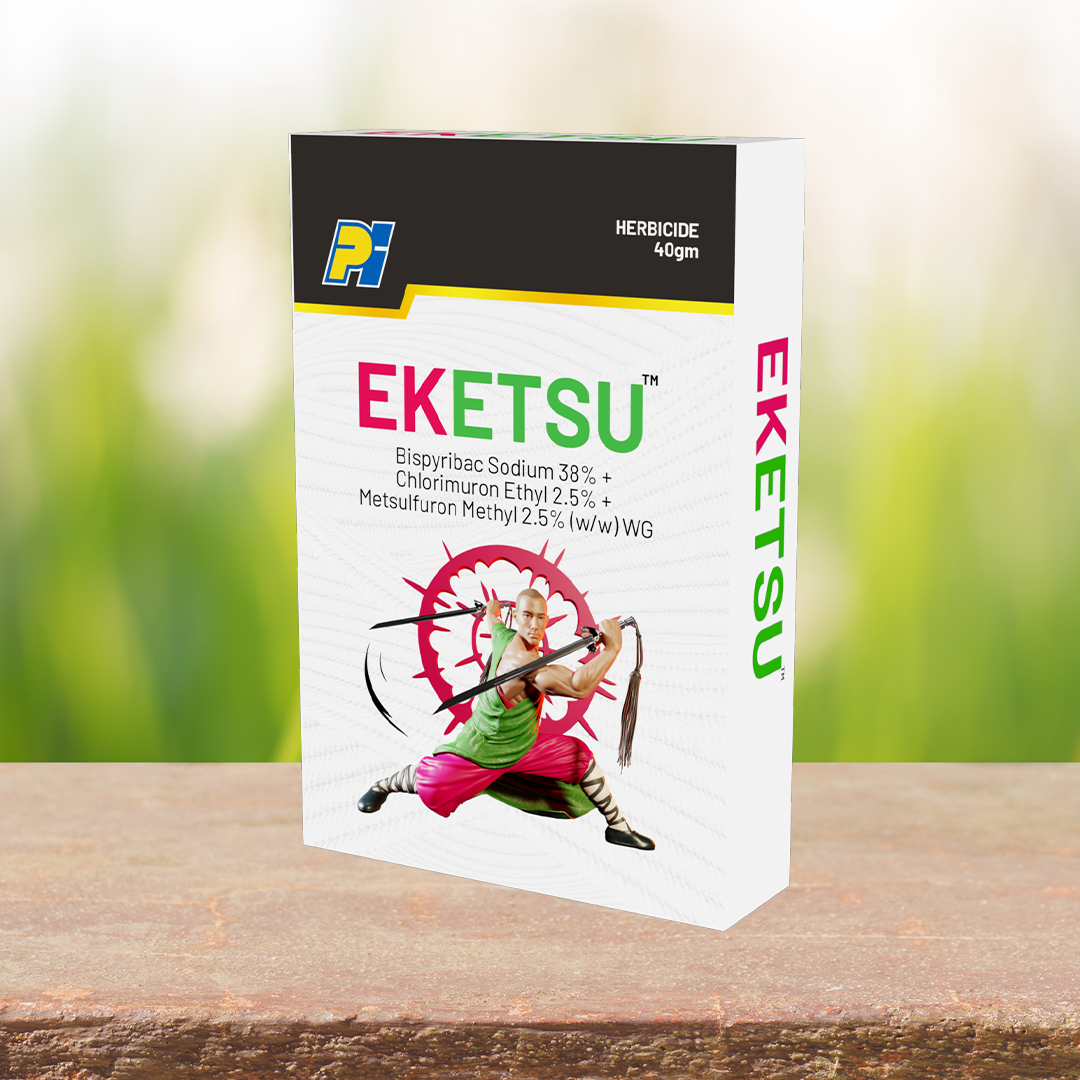Features & Benefits
- Broad spectrum-Controls Grasses, Sedges and BLWs- Very effective on difficult to control weeds-Sedges & BLWs along with key grasses
- New technology with Improved efficacy – Enhances Productivity by protecting crop from crop-weed competition
- Unique Formulation- Convenient to Users
- Saves time & effort for weed control
- Minimum wastage during handling
- High solubility resulting in better absorption in target weeds
- Flexibility of application timing at 2-5 leaf stage of weeds
- Safe chemical Profile- Safe to rice crop-No shock to crop resulting in natural growth
Method of Application
- Time of application and crop stage:
- Direct Seeded Rice: 15-25 days after sowing at 2-5 leaf stage of weeds.
- Transplanted Rice: 10-15 days after transplanting at 2-5 leaf stage of weeds.
- Weather Conditions: Should be applied preferably in the morning and evening. Do not spray against wind directions.
- Water: Clean water to be used for spray.
- Application technique, equipment type, nozzle type:
- Clean application equipment thoroughly by using a detergent or commercial spray cleaner.
- Triple rinse the equipment before and after applying herbicide.
- Apply herbicide with recommended dose using knapsack sprayer fitted with flat fan or floodjet nozzle using 500 L/ha quantity of water to ensure thorough coverage.
- Spraying Instruction: Spray uniformly in the direction of wind. Ensure thorough coverage ofthe weeds.
- Dosage: For Direct Seeded Rice- 100 g of formulation per hectare, For Transplanted Rice- 100 g of formulation per hectare
- Instruction for mixing: Take the measured quantity of herbicide and add to it a small quantity of water. Stir thoroughly using a rod or stick and then add the remaining quantity of water, agitate well to form final spray solution.
- Re-entry Restrictions: Do not enter or allow worker entry into treated areas during the restricted entry interval of 24 hours.
- PHI: Direct Seeded Rice-64 Days, For Transplanted Rice- 64 days.
- Application timing: Should be applied preferably in the morning and evening.

